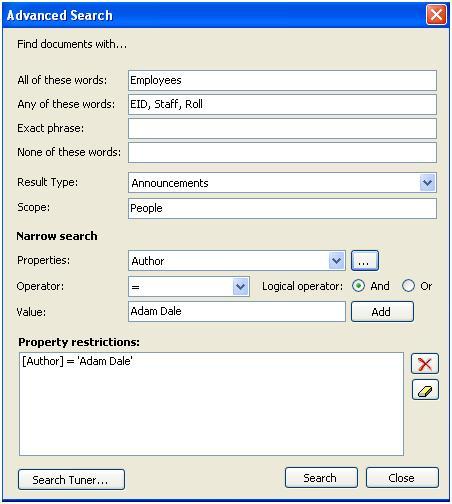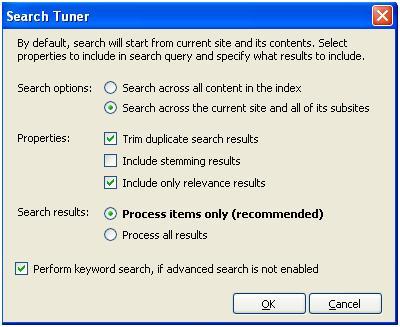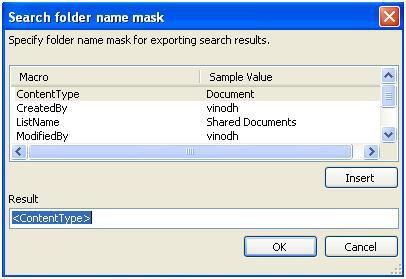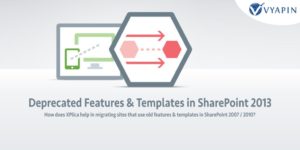Organizations are looking into ways to increase workforce productivity and particularly in the context of ‘flexible work hours’ and ‘work from home’ practices, access to information anytime and anywhere is the need of the hour. Information must be available for employees working ‘offline’ to work and collaborate. Exporting SharePoint document library contents, list items and associated metadata and file attachments to file systems manually would prove a daunting task for SharePoint users. SPList Export for SharePoint (SPListX) was engineered after a considerable research on the above lines.
The new version of SPListX makes use of ‘Search Criteria’, a powerful feature which allows the user to export SharePoint contents to file systems based on ‘Search results’. SPListX leverages the enterprise search feature of MOSS 2007 by providing the user with ‘Basic Keyword Search’ and ‘Advanced Search options’ and allowing the user to drastically cut down the time involved in exporting contents to file repositories. Hence, the user can retrieve related information spread across various lists, collate and classify them to derive meaningful information.
This blog post would discuss in detail as to how SharePoint users can use the ‘Search criteria’ feature in SPListX to export those relevant search results to the Windows file system.
Keyword Search and Advanced Search options:
As stated earlier, SPListX makes use of a basic keyword search and an Advanced Search feature and allows the user to export SharePoint contents to the file repositories. SPListX through its ‘browse option’ allows the user to select the SharePoint document, list items with associated metadata and file attachments to export them on to the file system. Using the basic keyword search, the user can specify the keywords based on which the SharePoint contents are populated and exported. Users can fine tune their search results by applying the Advanced Search option. The advanced search option leverages the advanced search feature of SharePoint to allow users to precisely export the relevant SharePoint contents.
Screenshot of SPListX-Advanced Search options:
SPListX is built over the most familiar SharePoint’s advanced search feature. The advanced search option allows the user to fine tune the search results based on the following three provisions:
i) Result Type based search: SharePoint has only certain standard result types such as Documents, Word Documents, Excel Documents and Presentations. SPListX on the other hand supports all result types including SharePoint lists such as Announcements, Discussion Boards, Tasks, Survey etc. Search results falling under the corresponding Result type are alone reported for the user to act on.
ii) Imposing Scopes: SPListX also allows the user to impose ‘scopes’ to the search results. Scopes are search rules that are defined in SharePoint Shared Service Providers Properties and can be readily imposed to the given search results thereby fine tuning the results to a larger extent.
iii) Conditional export: SPListX also provides for property based conditional export of SharePoint content. The users can select from the default properties or create their own properties and apply logical conditions to precisely export SharePoint document library contents, List items with their associated metadata and file attachments. This allows the user to consolidate, reorganize and hence optimize the search results.
Search Tuner options: With the ‘Search Tuner’ option the users can fine tune their search results to include from a wide range of options available.
Screenshot of Search Tuner:
Search across site farm: Search Tuner is a significant feature that empowers the user with an array of options as above. The user can invoke a search across all sites corresponding to a site farm by choosing the ‘search across all content in the index’ options. The search can very well be confined to the current site and its sub sites by choosing the other option.
Handling duplicate records: Search Tuner allows the user to effectively handle duplicate records existing in multiple locations. The user can choose to trim duplicate search results and retain only the original source.
Stemming: The process of retrieving information related to a ‘root keyword’ is called as stemming. For example: If ‘Run’ happens to be your search keyword, stemming would involve words such as ‘running’,’ ran‘ etc. as these words are derived out of the base keyword ‘run’. It is left to the discretion of the user to include stemming results to the search results. Choosing the option ‘Include only relevant results’ allows the user to choose only the relevant results corresponding to the search option.
Search Tuner also allows the user to confine the search to process only the list items with their associated metadata and file attachments. It also provides for the search to include List view URLs, Site URLs relevant to the given search keywords.
Search Validation: SPListX through its ‘Search option’ task type allows the user to Trial Search and validate the Search results before performing a live search. This allows the user to troubleshoot some of the common errors reported thereby saving time involved in error prone searches. Trial Search also allows the user to compare results with the SharePoint search results and look for deviations if any. The search results can also be exported into various file formats and can be used as an input batch file for exporting SharePoint list contents in SPListX’s Batch File based export task.
Search Tag option: Users can now tag their search results in their destination using the ‘Search Folder Tag’ in the Search option task type (Destination Folder options). The folder can be tagged by virtue of its Content Type, Author Name, Time Stamp etc. This allows the user to manage the exported contents better.
Screenshot of Search Folder Name Mask:
The above screenshot shows the Search Folder Name Mask with various options to tag the destination folder with. The folder can be tagged with the values corresponding to the listed Macros to classify information exported and to manage them effectively.
SPListX’s Search criteria come with an array of options allowing the user to exercise full control over the document migration / document export process. It fully leverages the MOSS 2007’s formidable content search features and empowers users with an easy, flexible and reliable methodology to export enterprise-wide information to file systems.
For a 30-day free trial version of SPListX, visit the product home page at
https://www.vyapinsoftware.com/products/sharepoint-to-fileshare-migration/splistx/sharepoint-list-export or contact our sales team at sales@vyapinsoftware.com for any pricing related queries.










